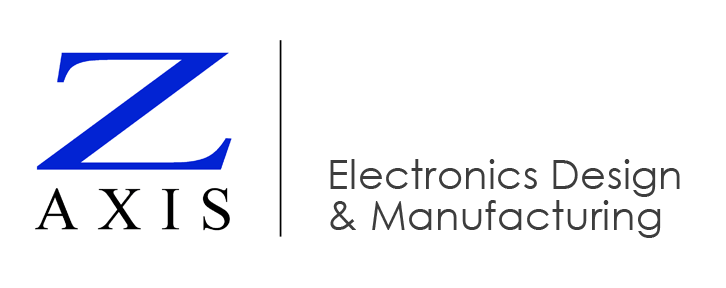This video explains how Bear Power Supplies, a division of Z-AXIS, designs a power supply and why troubleshooting is time-consuming.
Specifications and Schematics
Reviewing power supply specifications is the first step in the process. Even when a customer provides a detailed requirements document, Z-AXIS reviews the specifications to make sure everything is correct and nothing is missing.
Next, we create a schematic and perform component calculations. The schematic shows the different types of components as symbols, but our calculations define values such as resistance, capacitance, or inductance.
We then decide how many parts to use. For example, does the power supply need one 10,000 micro-farad capacitor or 10 1,000 micro-farad capacitors? This decision will affect mechanical constraints and performance.
Sourcing and Board Layouts
Next, we search for parts. Vendors offer many components with the same performance, so we consider price, availability, lead time, and support for pick-and-place manufacturing. Typically, there are trade-offs to make.
When the schematic is complete, we bring it into the board layout. That’s where parts are manually placed and the traces between them are routed. Sometimes, this step is iterative because the schematic changes.
Once the board layout is complete, Z-AXIS orders all of the power supply’s parts, including the board itself. Our Production department then builds a prototype that Engineering can start to work on.
Troubleshooting
Troubleshooting comes next and is the longest step in our design process because even well-designed circuits don’t work well the first time. And it’s not unusual for troubleshooting to discover many different problems.
That’s why Z-AXIS takes the time to troubleshoot everything from noise, performance, and efficiency to thermal management and the mechanical design of the power supply enclosure.
For example, there could be noise from one part of a circuit to another. There could also be currents or voltages where they weren’t expected. Or the enclosure might need a screw to protect against vibrations.
Z-AXIS has an EMI chamber, oscilloscopes, and probes for power supply troubleshooting, but it also takes collaboration among team members and communications with our customers.
You might say that 16 weeks of troubleshooting in a 26-week design process is a long time, but that’s time well spent for a power supply that meets all of a customer’s requirements.
Finding Innovative Solutions
How can we help you with your next electronics design and manufacturing project? Contact us.
